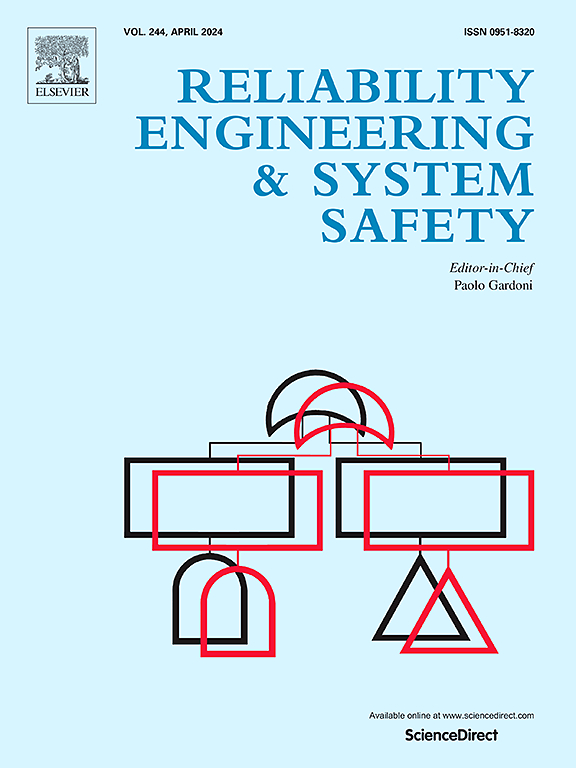A distributed inference method integrating causal analysis and surrogate models for optimizing tuned mass damper parameters to enhance offshore wind turbine safety
IF 9.4
1区 工程技术
Q1 ENGINEERING, INDUSTRIAL
引用次数: 0
Abstract
This study proposes a Distributed Inference Method integrating Causal Analysis and Surrogate Models (DIM-CASM), which aims to predict the structural responses and damage of offshore wind turbines (OWTs) under varying environmental conditions while adaptively optimizing Tuned Mass Dampers (TMDs) to enhance structural safety. As a novel paradigm for surrogate model application, DIM-CASM leverages its unique distributed inference model structure and deployment approach to fully utilize indirect variables often ignored in traditional surrogate models. The logic of data transmission within DIM-CASM closely mirrors the load transfer and interference processes in OWTs, resulting in higher fitting accuracy. In a case study involving a 15MW OWT, DIM-CASM was used to identify TMD parameters that adapt to varying wind and wave conditions. Compared to traditional fixed-parameter TMD strategies, the adaptive TMD derived through DIM-CASM demonstrates significant improvements in reducing the tower structure's extreme responses and coefficient of variation. Moreover, the DIM-CASM framework exhibits a unique interpretability advantage, enabling new mechanistic explanations through comparative analysis of pre- and post-optimization causal graphs. This reveals that the TMD's role might involve disrupting the influence of vertical structural responses at the tower top on the longitudinal responses, providing valuable insights for future studies on optimizing structural control strategies.
求助全文
约1分钟内获得全文
求助全文
来源期刊

Reliability Engineering & System Safety
管理科学-工程:工业
CiteScore
15.20
自引率
39.50%
发文量
621
审稿时长
67 days
期刊介绍:
Elsevier publishes Reliability Engineering & System Safety in association with the European Safety and Reliability Association and the Safety Engineering and Risk Analysis Division. The international journal is devoted to developing and applying methods to enhance the safety and reliability of complex technological systems, like nuclear power plants, chemical plants, hazardous waste facilities, space systems, offshore and maritime systems, transportation systems, constructed infrastructure, and manufacturing plants. The journal normally publishes only articles that involve the analysis of substantive problems related to the reliability of complex systems or present techniques and/or theoretical results that have a discernable relationship to the solution of such problems. An important aim is to balance academic material and practical applications.
 求助内容:
求助内容: 应助结果提醒方式:
应助结果提醒方式:


